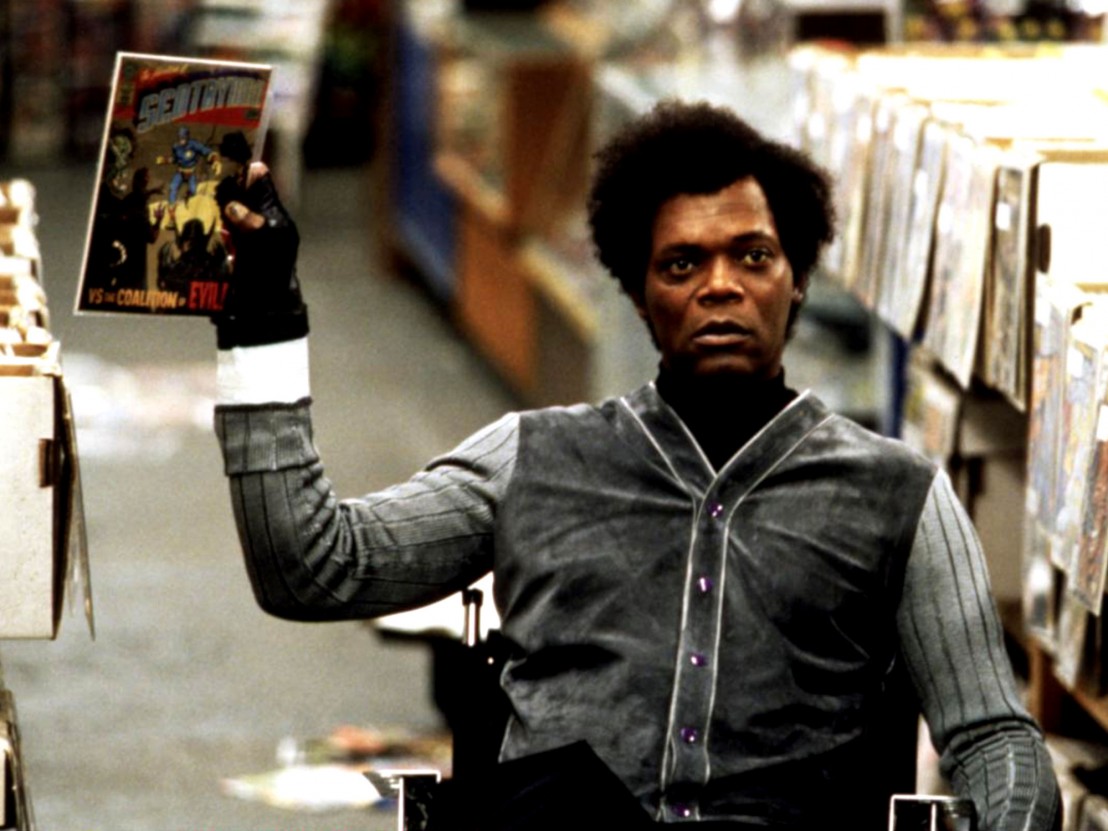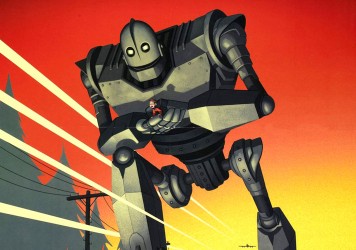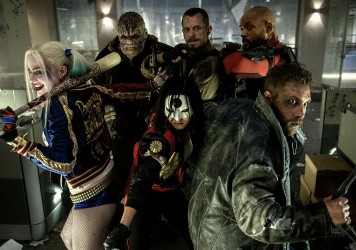
In the Superman comics there is a character called Bizarro, a twisted, villainous inversion of the iconic hero. Bizarro looks and acts like Superman but lives by the exact reverse logic: he says adjectives to mean their opposite, he sees it as a crime to do good, and so on. There’s a great Seinfeld episode based on the character.
In today’s age of superhero movie ubiquity, it’s tempting to read 2000’s Unbreakable as a Bizarro version of everything that proceeded it. The basic similarities are all there: a cloaked protagonist with superhuman strength locks horns with a scheming, criminally insane supervillain. We see the reluctant hero, played here by Bruce Willis, come to terms with his powers, use them for civic protection and watch him win the girl before finally overcoming his nemesis. We get both characters’ origin stories in flashback, and both are played by Hollywood A-listers. It’s the preeminent blockbuster blueprint.
And yet it by no means and exaggeration to say that Unbreakable is the exact antithesis of Marvel and DC’s current output. For starters, it clocks in at 106 minutes and its cast barely extends beyond the four central actors. Nothing explodes, erupts or is shot at from beginning to end. There is no shouting. The film is shot and cut with a near-maddening degree of patience, its soundtrack almost noiseless for long spells, and it resorts to eye-catching CGI not once.
It may be anathema to the box-office behemoths of today, but there’s no doubt that M Night Shyamalan’s film is a superhero movie in the truest sense. Nor that, as its camera glides affectionately down the aisles of comic-book stores drinking in vintage illustrations, it shows a genuine passion for the original form that is unmatched by anything that has come since (with the possible exception of Sam Raimi’s Spiderman films).
The present glut of cinematic universe-forging comic-book adaptations has born some decent films and some terrible ones, but none can claim to rival the atmosphere and immersion of Unbreakable. Remember the face-clawing tedium that was the final hour of Man of Steel? Indestructible hero and indestructible villain throwing each other through brick walls ad nauseum, CGI skyscrapers reduced to CGI rubble at a rate of knots, the level of peril remaining at precisely zero throughout. Unbreakable’s final encounter includes not a single building flattened, not a single punch thrown and lasts all of five minutes. Instead, we see Willis’ David Dunn defeat his arch-nemesis by dobbing him in to the authorities. It is a scene of understated gravitas, perhaps the most affecting showdown of any modern superhero movie.
It’s also significant that the other character at the heart of Unbreakable is Samuel L Jackson’s villain. Six years before he was being driven to high-pitched distraction by those muthafuckin’ snakes on that muthafuckin’ plane, Hollywood’s keenest scenery-stealer took to the screen with uncharacteristic restraint as embittered comic-art dealer Elijah Price, barely raising his voice above a murmur throughout (and his one concession to theatricality, the berating of a customer intending on buying a limited edition print for his kid, works as a nice metaphor for how the film wants to treats its audience like adults).
If Heath Ledger’s Joker was so arresting because of his lack of motive, Jackson’s cane-clutching baddie chills precisely because his are so plainly stated. But while Ledger used a manic physicality to unnerve, Jackson achieves the same end through the opposite means: his resolutely undemonstrative “Mr Glass” is straight from the John Doe school of dead-calm supervillainy. The scene where he repeatedly sabotages a book store clerk’s attempts to wheel him out of the shop is a more effective, more affecting demonstration of directionless rage than any of the extravagant acts of terrorism enacted by his screen successors.
While today’s superhero movies aim for excitement via loud action and bloated narratives, Unbreakable is deadly quiet, only lightly dusted with plot and told with an everyday realism that verges on mundanity. Its sole fight sequence is unpleasant and ungainly, actively un-thrilling, shot from a distance in one unbroken take. Admittedly the film’s slow pacing can seem a bit strained at times, but it’s a directorial style that takes guts to pull off this effectively – and one that’s aged well over a 16-year period in which frenzied spectacle has become the new normal.
Two years after Unbreakable was released, Raimi’s first Spider-Man film became the highest grossing film of that year, taking close to half a billion dollars worldwide and effectively igniting the superhero movie boom. A decade on, Marvel’s list of past and prospective releases stands at 45, while DC having latterly leapt aboard the gravy train. Between them, these studios are working hard to ensure that the summer blockbuster season remains choc-a-bloc with superhero movies, a trend which shows no sign of letting up. “These are mediocre times, Mrs Dunn,” Jackson tells Robin Wright’s Audrey Dunn in Unbreakable. “People are starting to lose hope.” He didn’t know the half of it.
Published 21 Aug 2016

By Tom Bond
Brad Bird’s soaring 1999 animated feature taught us that true heroism is much more than quips and spandex.

The hype around Suicide Squad suggests audiences are keen to see more of their favourite comic-book antiheroes.

By Elena Lazic
Sam Raimi’s franchise midpoint is a perfect superhero sequel – a film with a sincere belief in humanity.